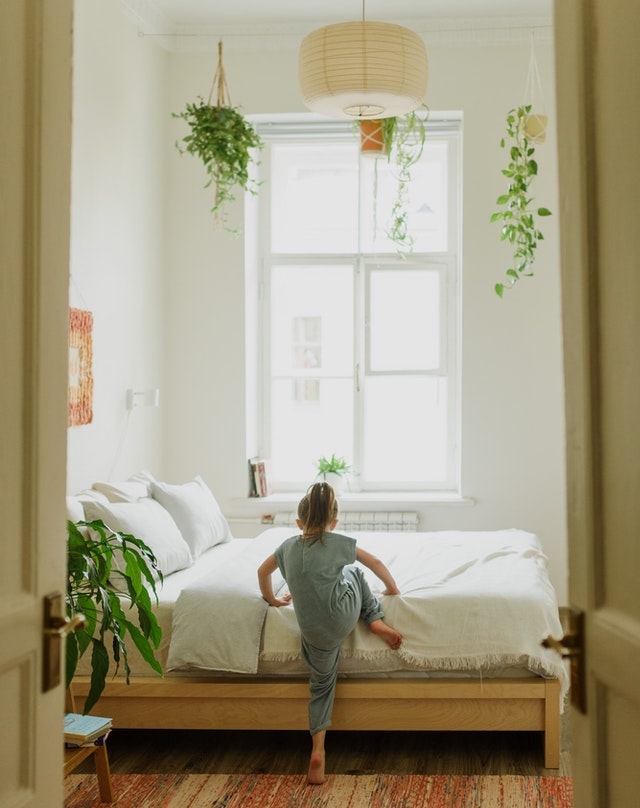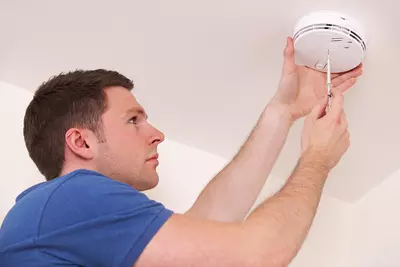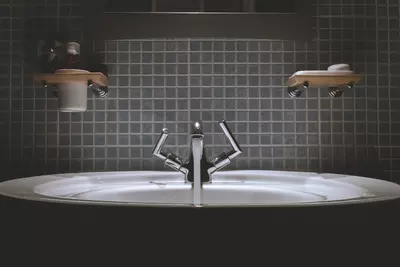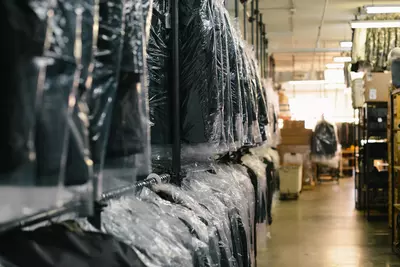
 This section focuses on how to make safe choices regarding the physical structure of your home and its contents. For information on protecting yourself and/or your family from physical, verbal, or emotional abuse, please refer to the National Coalition Against Domestic Violence (NCADV).
This section focuses on how to make safe choices regarding the physical structure of your home and its contents. For information on protecting yourself and/or your family from physical, verbal, or emotional abuse, please refer to the National Coalition Against Domestic Violence (NCADV).
Your home is the place you spend the most time – where you eat, sleep, connect with family, and relax. By working to ensure that your home is a safe space, you can make your personal space a refuge for wellbeing.
Keep children safe
About one-third of American children live in a home with a firearm, and nearly half of those homes don't lock the guns. The American Pediatrics Association states that the safest home for children is one in which there are no guns at all, but if you do keep a firearm, keep them locked away and unloaded to keep kids and other household members safe.
Likewise, keep medications, toxic household products such as bleach and ammonia, and choking hazards out of reach of children or adults who may need additional supervision.
Other tips for homes with older adults and children
- Keep your stairs and walkways clutter-free to avoid tripping hazards
- Install non-slip mats and grab bars in showers and tubs
- Make sure stairs and banisters are in good repair
- Use safety gates for young children, especially at the top of stairs
- Keep an eye on vulnerable family members who may have trouble walking or seeing
- Install bright lighting
Create a calm environment
There are many steps you can take to create a healing home, but the core idea is to reduce stress triggers as much as possible. In addition to the physical changes you can make to your home's arrangement and lighting, you can help create calm by managing your own stress. Learning to take deep breaths when you are frustrated or create relaxing rituals during stressful times can not only help you feel better, it can provide a healthy role model for the people you live with.
For some households, stress can be a significant aspect of daily life, especially for families experiencing the impacts of poverty, racism, chronic health issues, and other hardships. Researchers Sheidow et al found that having positive relationships and good communication at home can help mitigate the impact of chronic stress for children and adolescents, even in the face of hardships and other difficulties.
Prepare for emergencies
The best thing you can do to minimize the consequences of emergencies is to plan ahead of time. Every home should contain:
- An easily accessible fire extinguisher
- At least one working fire and smoke detector
- A first-aid kit
- Flashlights with fresh batteries
The Centers for Disease Control has a packing list for an emergency supply kit that will come in handy if a natural disaster should strike.
Learning to stay calm during a crisis can have a significant impact on your ability to manage an emergency safely and effectively. Mindfulness can help you learn to shift from a state of panic to calm – though you will want to practice as much as you can when you are not in a crisis!
Improve your air, water, and household products
Many of these tips are easy to do right away, others may involve some research and work. If you live in an apartment, know your rights with respect to smoke detectors and other safety monitors as well as testing for toxins.

While solid construction decreases your home's energy loss, a home that is too airtight can seal in indoor air pollutants. Proper ventilation also helps control moisture and reduces risk of mold and other environmental health concerns. Simple fixes to increase ventilation include installing ceiling fans and operable skylights and windows.
- Install a radon detector.
- Check for moisture problems, and look into mold testing if necessary.
- If you have an older home, lead may be present in paint and pipes. Call your local public health department for information eliminating lead in your home.

Large lawns traditionally require greater pesticide use and increase air and noise pollution generated from mowing. Consider planting perennial groundcovers, native foliage, or other low-maintenance landscaping. Even better, landscape with edible plants and devote a portion of your yard to organic vegetable gardening.
If you live with someone who smokes, insist on a strict outdoor smoking policy. Approximately 3,000 American adults die of lung cancer each year due to secondhand smoke exposure. In young children, secondhand smoke increases the risk of sudden infant death syndrome (SIDS) and asthma.

Install it near your bedrooms and be sure to change the batteries twice a year. (It’s easy to remember if you do it when you change your clocks.)

The only way to be totally certain about your home's water quality is to have it tested. This is especially important for people in high-rise buildings, where "flushing" the pipes may not be as effective. Your local water supplier, health department, or university can offer information about credible testing resources. Run or "flush" your tap for up to two minutes, depending upon how long it's been between uses.
Water filters have been shown to increase purity. Filters can range from simple pitcher-based systems to more elaborate reverse-osmosis home units. Since hot water is more likely to contain lead, only drink, cook, and make baby formula with cold water.
Remember that bottled water is not necessarily of higher quality than regular tap water. And according to the Natural Resources Defense Council, 60 million plastic bottles a day are manufactured, transported, and then disposed of in U.S. landfills, compromising your community's environmental health.
Nail polish, body lotions, and perfumes often contain phthalates, a controversial substance linked to birth defects in animals and possibly humans. Shampoos that attack dandruff may pose some health issues; the active ingredient selenium sulfide is a possible carcinogen. Hair dyes often have coal tar, another chemical linked to cancer.
If you're tossing old medications, resist flushing them down the toilet, where they can invade water supplies. Call your local recycler, many of which accept old cleaning products, paint, oil and other chemicals that create even more treacherous landfills.

Seek out an environmentally conscious dry cleaner who does not use perchloroethylene, or "perc," a chemical that is toxic to humans. Better yet, when possible choose clothing that only requires a trip to your laundry room, not a professional cleaner.
Some plastics contain bisphenol A (BPA), an estrogen-like chemical that may interfere with the regulation of the body’s natural hormones. (BPA also coats the inside of the food cans and is sometimes found on cash-register receipts.) Some studies have linked BPA to childhood asthma and negative effects on the brain, behavior, and prostate gland in fetuses and children.
Avoid microwaving food in plastic containers. Although research is inconclusive, the heating process is thought to release chemicals from the plastic into your food. Reusing plastic bottles is another source of controversy. Some experts think reuse is safe if you carefully wash and dry the bottles between each use, while others feel that wear and tear on the plastic causes toxic chemical leakage. An always-safe alternative is glass.
- 1 of 13
- 2 of 13
- 3 of 13
- 4 of 13
- 5 of 13
- 6 of 13
- 7 of 13
- 8 of 13
- 9 of 13
- 10 of 13
- 11 of 13
- 12 of 13
- 13 of 13
aap.org. n.d. Safe Storage Of Firearms. American Academy of Pediatrics. Available at: https://services.aap.org/en/advocacy/state-advocacy/safe-storage-of-fir…
Palmiter, D. and Alvord, M., 2020. Managing Stress For A Healthy Family. American Psychological Association. Available at: https://www.apa.org/topics/managing-stress-healthy-family
Sheidow, A., Henry, D., Tolan, P. and Strachan, M., 2013. The Role of Stress Exposure and Family Functioning in Internalizing Outcomes of Urban Families. Journal of Child and Family Studies, 23(8).
